David Haggart: The killer whose story inspired a Hollywood legend
- Published

A film based on David Haggart's story was shot in the late 1960s
It was a crime which horrified a south of Scotland town but the culprit ended up featuring on the silver screen.
Two hundred years ago - on 18 July 1821 - David Haggart was hanged in Edinburgh for the murder of a jailer in Dumfries.
A book was published not long after the killer's death - reputed to be his own version of his life story.
It would form the basis of the film Sinful Davey - starring John Hurt and directed by John Huston in the late 1960s.
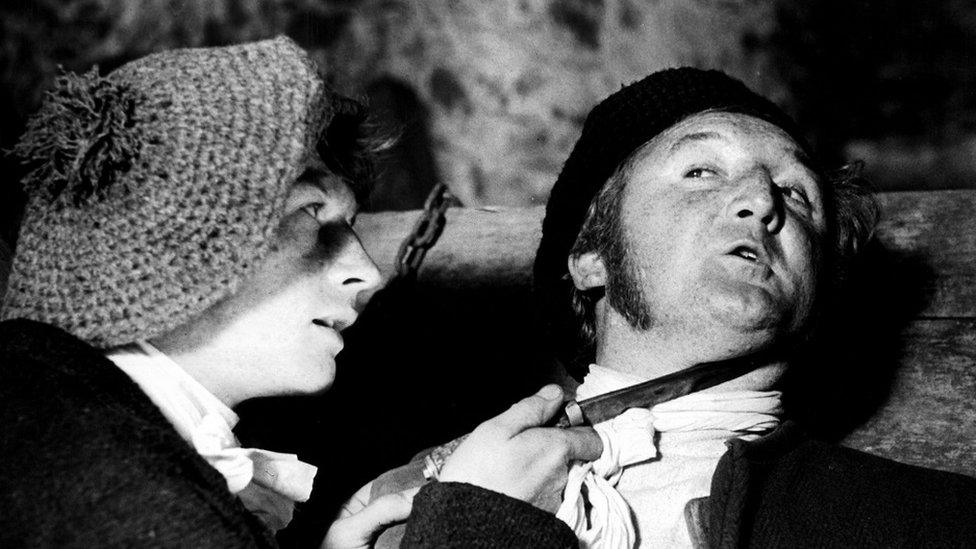
Haggart turned to a life of crime at an early age
According to the Oxford Dictionary of National Biography, David Haggart was born in Edinburgh on 24 June 1801, the son of a gamekeeper.
He worked as a ghillie in his youth but "soon turned to petty theft".
According to his own version of events, he was about 10 when he began his "sinful career" and later in life made the acquaintance of many "worthless characters".
Over time he became a regular pickpocket at fairs and racecourses across northern England and southern Scotland, although sometimes venturing as far north as Aberdeen.
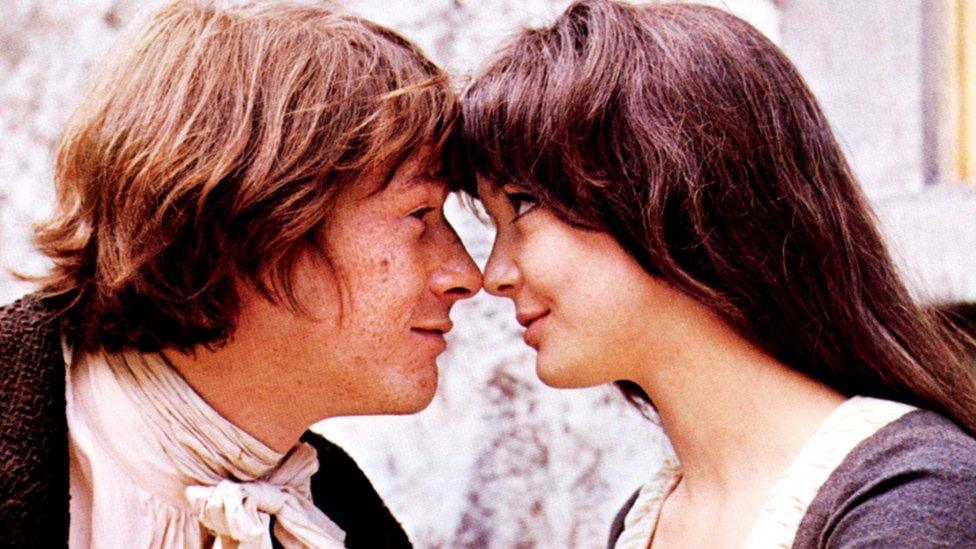
The story of Haggart's life was told in a book which inspired the film many years later
A series of break-ins and thefts would also follow.
Among his early crimes - according to his book The Life and Adventures of David Haggart, external - was stealing a cockerel from a woman in Edinburgh's new town and, later, making off with a till in Stockbridge.
In another incident, having gone to the village of Currie, he found himself "some miles from town and tired" and so took a pony to ride it home.
His book then recounts how he and a friend targeted village fairs and races at places like Kelso, Lockerbie and Langholm to steal money.
Caught and imprisoned on a regular basis, he managed to break out of four times - but his final escape would be a deadly one.
On 10 October 1820, his breakout from Dumfries tolbooth would prove fatal for both Haggart and his jailer.
He knocked down Thomas Morrin with a stone and killed him.
Haggart fled but was eventually arrested in Belfast the following year, escaped again, and was finally caught in Dublin.
He was brought "heavily ironed with a crippling iron helmet" from Kilmainham to Dumfries where a crowd waited.
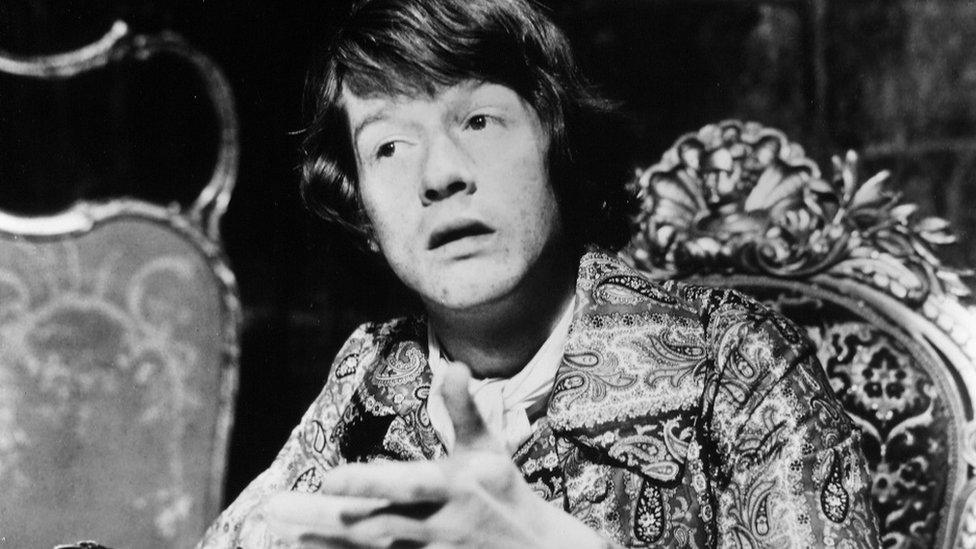
Critics praised John Hurt's performance in the lead role of Sinful Davey
"On their approach to Dumfries, which was in the dark, there were many thousands of people on the road, many of them with torches in their hands, waiting his arrival," the book on his life recounts.
"When he got to the jail door, it was scarcely possible to get him out of the coach for the multitude all crowding for a sight of Haggart the murderer."
He was tried in Edinburgh on 11 June 1821 and found guilty of murder.
"When the judge was passing the awful sentence, he turned dizzy, and gasped for breath," his book says.
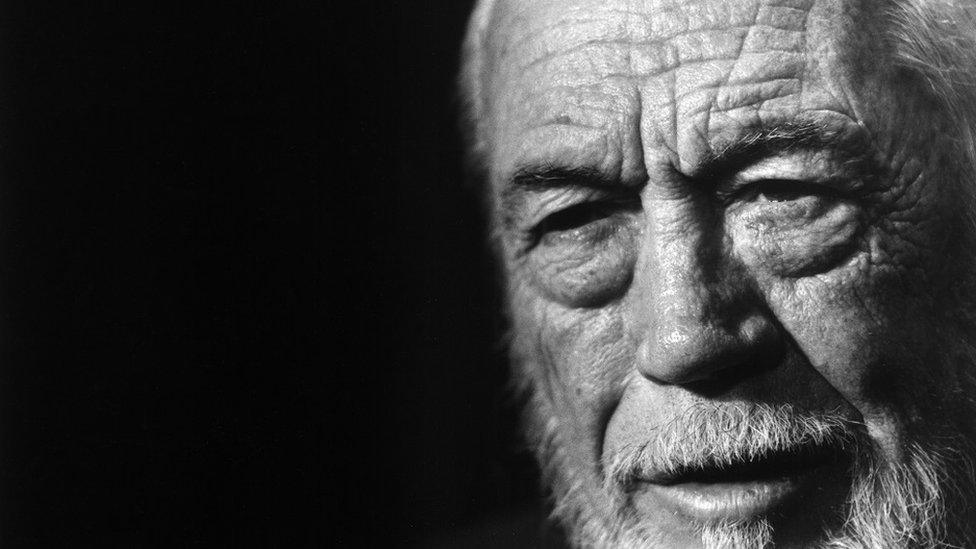
John Huston directed the film based on Haggart's life
He was hanged "before a large crowd" on 18 July.
While he was in jail, Haggart is reputed to have partly written and part dictated an account of his life.
It was to be published after his death to raise money for his family.
The Oxford Dictionary of National Biography said "an air of improbability breathes over many of his pages" but it proved to be a popular publication nonetheless.
The story would also prove an inspiration for a cinema giant nearly 150 years later.
John Huston - the man behind films like The Maltese Falcon and The Treasure of the Sierra Madre - directed the 1969 film Sinful Davey based on Haggart's book for United Artists in 1969.
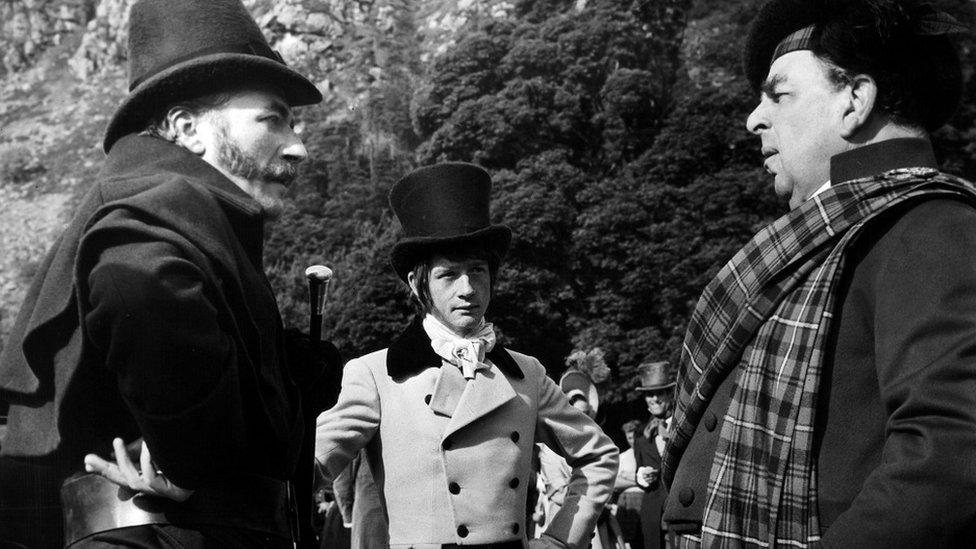
The film was branded "inconsequential but likeable" by critics
It starred John Hurt in the lead role.
The film did not prove a huge success and was described by Time Out as an "inconsequential but likeable romp" praising the lead actor for his "engaging performance".
Encyclopaedia Britannica dismissed it as one of a "string of lacklustre films" directed by Huston in the late 1960s.
Nonetheless, it gave Haggart's story a new life.
The book recounting his life was republished and the tale of his eventful life was taken to a new audience long after he had been executed for his most serious crime.